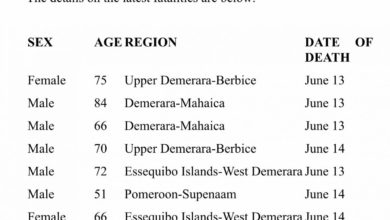Racial disparities in maternal mortality
As predominantly Black communities throughout New York City are ravaged by COVID-19, the city has been reminded of something it is a privilege to forget: the intense racial disparities that exist in healthcare access and quality, here and across the United States. Though any strain this daunting reality puts on families of color is appalling, in no aspect of life is systemic racism in healthcare more agonizing than in regards to maternal care.
Black women in New York City are 12 times more likely to die from pregnancy-related causes than non-Hispanic white women. That is, for every family grieving the loss of a white mother, there are 12 other Black families suffering this same, unbearable trauma. As a mother, it pains me that for so many one of the greatest blessings in life is clouded by such devastation and crushing despair.
In 2018, the de Blasio administration said Black non-Hispanic women were eight times more likely to die of pregnancy-related complications than white women– a rate much higher than the national average . What may be even more shocking is that racially disparate maternal mortality rates have actually been increasing in our city in recent years. Over the past decade, New York has experienced a 60 percent increase in maternal mortality. And though infant mortality is at an all time low across the city, according to the Citizens’ Committee for Children of New York, Black infant mortality is still three times higher than that non-Hispanic white children. Strikingly, the four communities with the highest rates of severe maternal morbidity are all in Brooklyn, according to a report published by the New York City Department of Health and Mental Hygiene. Why, in a city which praises its own technological prowess and medical advancements, are Black mothers and children dying at rates comparable or worse than those of developing nations?
To answer that question we as New Yorkers must realize that the implicit and explicit biases exhibited by those inside hospitals are only a piece of the puzzle. The systemic racism that exists outside of the healthcare system plays as much of a role in racial maternal and infant mortality disparities as that inside it.
According to a recent study done by the National Institute for Children’s Health Quality, though redlining in the city was banned more than 50 years ago, 3 out of 4 once redlined communities still struggle economically, meaning these communities continue to have unequal access to resources that affect birth outcomes and general well-being. Many of those living in these communities lack accessible grocery stores, also known as living in a “food desert,” which makes it far more difficult for expectant mothers to find food that is healthy for them and their children. Similarly, Black mothers and children are increasingly more likely to live in areas that expose them to harmful environmental risks, from polluted air to subpar water quality.
As if these hurdles weren’t high enough, 13 percent of Black women of reproductive age are uninsured and face significant challenges accessing any prenatal or postnatal health care. Racism can also result in women avoiding or postponing prenatal care that might identify weight gain issues, pregnancy-related hypertension, undiagnosed diabetes and other precursors of severe maternal complications. All of this before a mother even has her child.
While the city has taken some strides to combat the racial disparity in maternal mortality in recent years with First Lady Chirlane McCray announcing a $13 million program to reduce the disparity in maternal care at city hospitals and new initiatives such as the By My Side Birth Support program, it is not enough. On Saturday, Aug. 1, I attended the Mother’s Rally hosted by the Savearose Foundation. Surrounded by other Black women and our allies I was reminded once more of all there is left to do to lift up Black women into places of leadership within health institutions so they can hold health care providers responsible and help eliminate institutionalized and systemic racism from within the organizations’ walls.
In order to materially and meaningfully improve maternal health outcomes, we need systemic change that starts with the health care system and emanates through our communities to improve access to care and make the places Black women live and work healthier, more fair and in tune to their needs. Specifically, additional funding is needed to provide and/or strengthen CBO programs that work with providers to assess and address the issue. The city needs to assist in providing Childbirth Education and Prenatal Case Management, educating families and mothers on how to advocate for themselves, creating curriculums that highlight Black Maternal and Infant Health issues to medical students, and expanding post-delivery resources and support for up to two years.
Lastly, the city needs to promote Doula training while providing free Doula services to expectant and post-partum mothers throughout the five boroughs.
As New Yorkers, it is our duty to ensure that the only emotions felt by our city’s Black families when they welcome life into their homes are joy and hope.
The post Racial disparities in maternal mortality appeared first on Caribbean Life News.





